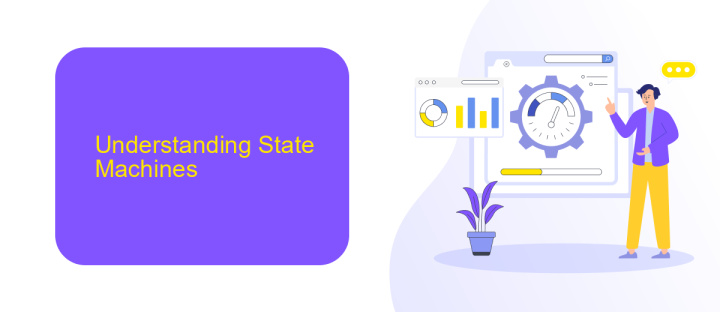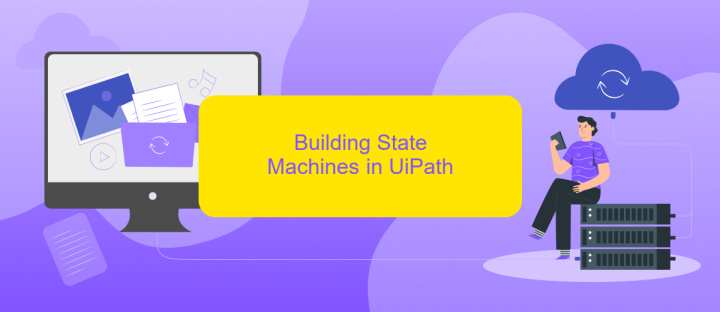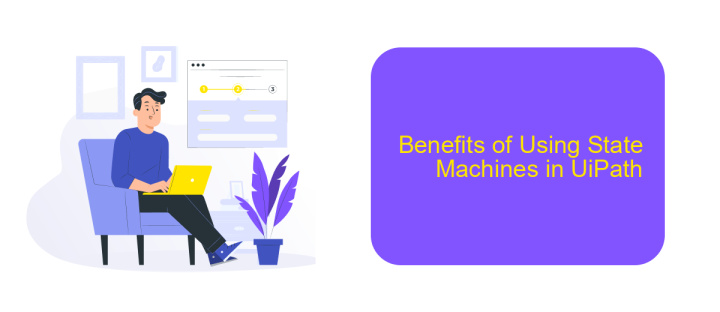What is State Machine in UiPath
A state machine is a powerful tool in UiPath for managing complex workflows. By defining distinct states and transitions, it allows for clearer, more efficient automation processes. This approach is particularly useful for handling scenarios with multiple decision points and varying paths, ensuring robust and adaptable automation solutions. In this article, we will explore the fundamentals and applications of state machines in UiPath.
Introduction
State Machines are fundamental components in the realm of automation, especially within UiPath. They provide a robust framework for managing complex workflows and decision-making processes. By leveraging state machines, developers can create more organized and maintainable automation projects, ensuring each step is executed under the right conditions.
- Enhanced workflow management
- Improved decision-making capabilities
- Increased project maintainability
Integrating state machines with other services can further streamline automation. For instance, using ApiX-Drive, a powerful integration service, allows seamless connectivity between various applications and UiPath. This enables automated data transfer and synchronization, enhancing the overall efficiency of your automation projects. By incorporating state machines and integration tools like ApiX-Drive, businesses can achieve higher accuracy and productivity in their automated processes.
Understanding State Machines

State machines in UiPath are a crucial component for designing complex workflows that require multiple states and transitions. Unlike traditional flowcharts or sequences, state machines enable developers to manage different states and their transitions effectively, making them ideal for scenarios where the process flow can change based on various conditions. Each state in a state machine represents a distinct phase in the workflow, and transitions define the conditions under which the workflow moves from one state to another.
One of the key benefits of using state machines is their ability to handle complex decision-making processes and integrate with various services effortlessly. For instance, integrating with ApiX-Drive allows seamless data transfer between different applications, enhancing the workflow's efficiency. By leveraging state machines and ApiX-Drive, developers can create robust, dynamic workflows that adapt to changing conditions and integrate with multiple external systems, ensuring a smooth and automated process.
Building State Machines in UiPath

Building state machines in UiPath involves creating workflows that transition between different states based on specific conditions. These state machines are useful for handling complex business processes, where each state represents a distinct phase of the workflow.
- Start by opening UiPath Studio and creating a new project.
- Drag and drop the "State Machine" activity from the Activities panel into the main workflow area.
- Add states by dragging "State" activities into the state machine container.
- Define transitions between states by connecting them with "Transition" activities.
- Set conditions for each transition to determine when the state should change.
- Incorporate activities within each state to perform specific tasks.
- Test the state machine to ensure it behaves as expected.
For integrating external services within your state machine, consider using ApiX-Drive. This service simplifies the process of connecting various applications and automating data transfer, making your state machine more efficient and versatile. By leveraging ApiX-Drive, you can seamlessly integrate APIs and streamline your workflow automation in UiPath.
Benefits of Using State Machines in UiPath

State machines in UiPath offer a structured way to handle complex workflows by breaking them down into manageable states and transitions. This approach enhances the readability and maintainability of automation projects, making it easier for developers to debug and update workflows as needed.
One of the key benefits of using state machines is their ability to manage asynchronous events and long-running processes efficiently. This is particularly useful in scenarios where workflows need to wait for external triggers or user inputs before proceeding to the next state.
- Modularity: State machines allow for the creation of reusable states that can be easily integrated into different workflows.
- Error Handling: Enhanced capabilities for error detection and recovery, ensuring more robust automation.
- Scalability: Simplifies the management of complex workflows, making it easier to scale automation solutions.
- Flexibility: Easily adaptable to changes in business processes, improving the agility of automation projects.
Moreover, integrating state machines with services like ApiX-Drive can further streamline automation by enabling seamless data transfer between different systems and applications. This integration facilitates real-time updates and reduces the need for manual interventions, enhancing overall efficiency.
Conclusion
Understanding state machines in UiPath is crucial for anyone looking to build robust and efficient automation workflows. State machines provide a structured way to manage complex decision-making processes and transitions between different states. By leveraging this powerful tool, developers can create more maintainable and scalable automation projects, ensuring that each task is executed in the correct sequence and under the right conditions.
Additionally, integrating state machines with external services can further enhance their capabilities. For instance, using a service like ApiX-Drive can simplify the process of connecting UiPath workflows with various APIs, enabling seamless data transfer and communication between different systems. This integration not only streamlines operations but also adds a layer of flexibility and adaptability, allowing businesses to respond quickly to changing requirements and conditions. In conclusion, mastering state machines in UiPath, along with effective integration tools, can significantly elevate the efficiency and reliability of your automation solutions.


FAQ
What is a State Machine in UiPath?
How does a State Machine differ from a Flowchart or Sequence in UiPath?
When should I use a State Machine in UiPath?
How do I implement a State Machine in UiPath?
Can I integrate a State Machine workflow with other automation tools?
Apix-Drive will help optimize business processes, save you from a lot of routine tasks and unnecessary costs for automation, attracting additional specialists. Try setting up a free test connection with ApiX-Drive and see for yourself. Now you have to think about where to invest the freed time and money!

